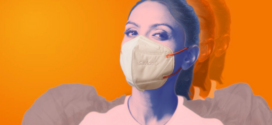A stroke occurs when the blood supply to a part of the brain is disrupted, leading to a variety of debilitating consequences. Brain strokes, commonly referred to as strokes, are a medical condition that occurs when there is a disruption in the blood supply to a part of the brain. This disruption can lead to a lack of oxygen and essential nutrients reaching brain cells, causing them to die. Let’s understand all about it.
Types of Brain Strokes
Ischemic Stroke:
Ischemic strokes are the most common type, accounting for approximately 87% of all strokes. They occur when a blood clot or plaque buildup narrows or blocks an artery supplying blood to the brain. This deprives brain cells of oxygen and nutrients, causing tissue damage.
Hemorrhagic Stroke:
Hemorrhagic strokes, while less common, are often more severe. They result from the rupture of a blood vessel within the brain, leading to bleeding into the surrounding tissue. This bleeding can cause increased pressure within the skull, damaging brain cells and tissue.
Transient Ischemic Attack (TIA):
Sometimes referred to as a “mini-stroke,” TIAs are temporary disruptions of blood flow to the brain. They share similar symptoms with ischemic strokes but typically last only a few minutes and do not cause permanent damage. However, TIAs are warning signs of potential major strokes and should not be ignored.
Causes of Brain Strokes
Understanding the underlying causes of strokes is vital in preventing and managing this life-threatening condition:
- High Blood Pressure (Hypertension): Uncontrolled high blood pressure is the leading cause of strokes. It can weaken blood vessel walls, making them more susceptible to rupture, or lead to the formation of blood clots.
- Atrial Fibrillation (AFib): AFib is an irregular heart rhythm that can cause blood to pool in the heart’s chambers, forming clots. If a clot travels to the brain, it can trigger a stroke.
- Smoking: Smoking damages blood vessels, increases the risk of blood clots, and decreases the amount of oxygen carried by the blood, all of which can contribute to stroke risk.
- Diabetes: People with diabetes are at a higher risk of stroke due to their increased likelihood of developing other risk factors, such as high blood pressure and high cholesterol.
- High Cholesterol: Elevated levels of LDL cholesterol can lead to the buildup of fatty deposits in the arteries (atherosclerosis), increasing the risk of blockages and strokes.
Warning Signs of a Stroke
Recognizing the warning signs of a stroke and acting quickly can make a significant difference in the outcome. The American Stroke Association emphasizes the “FAST” acronym to help identify stroke symptoms:
- Face Drooping: One side of the face may droop or become numb. Ask the person to smile, and if one side of their face doesn’t respond, it could be a sign of a stroke.
- Arm Weakness: The person may have difficulty raising both arms. One arm may drift downward or feel weak when attempting to lift it.
- Speech Difficulty: Speech may be slurred or garbled. Ask the person to repeat a simple sentence. If they have trouble, it could indicate a stroke.
Understanding the types, causes, and warning signs of strokes is essential for early detection and intervention. By raising awareness about strokes and taking preventive measures to address risk factors, we can make significant strides in reducing the burden of this life-altering condition and saving lives. Remember, acting “FAST” can make all the difference in a stroke patient’s journey to recovery.
By – Dr. Sunil Malagi, Consultant Neurosurgeon, KLE Suchirayu Hospital, Hubballi
 Newspatrolling.com News cum Content Syndication Portal Online
Newspatrolling.com News cum Content Syndication Portal Online




